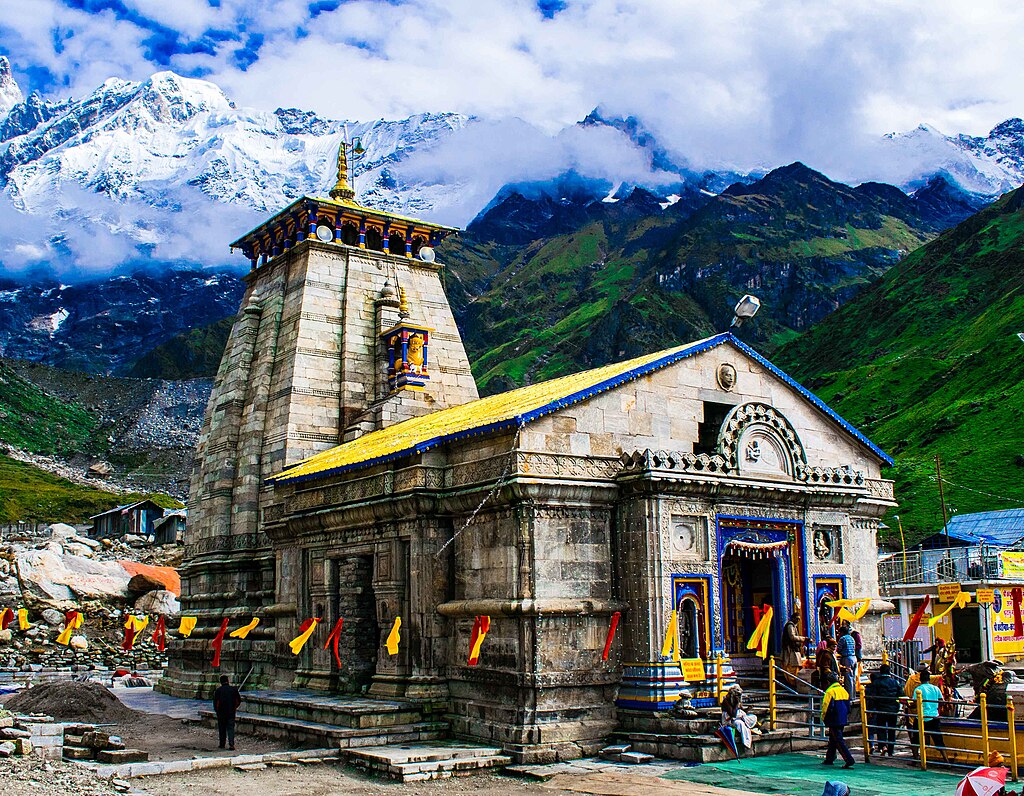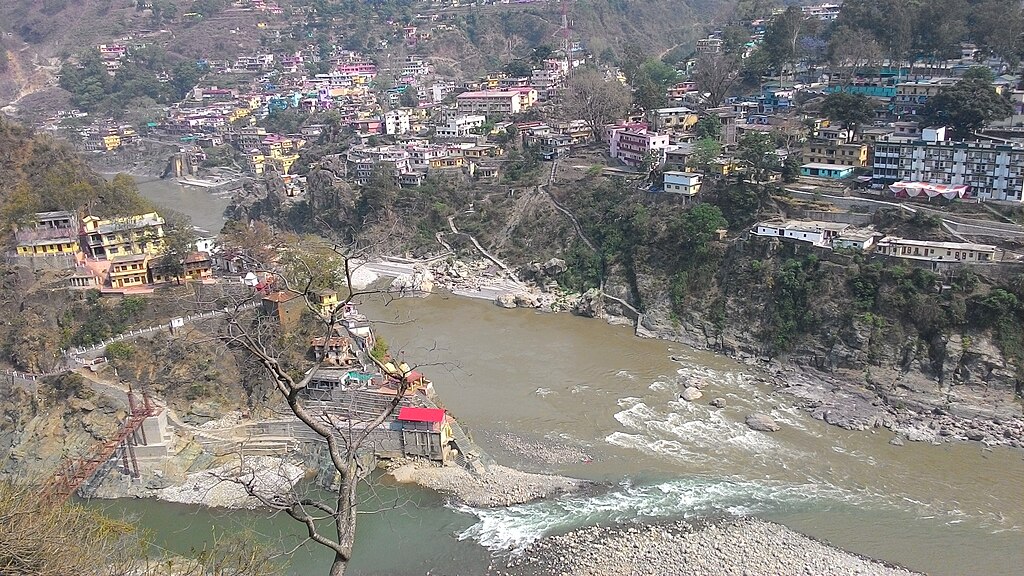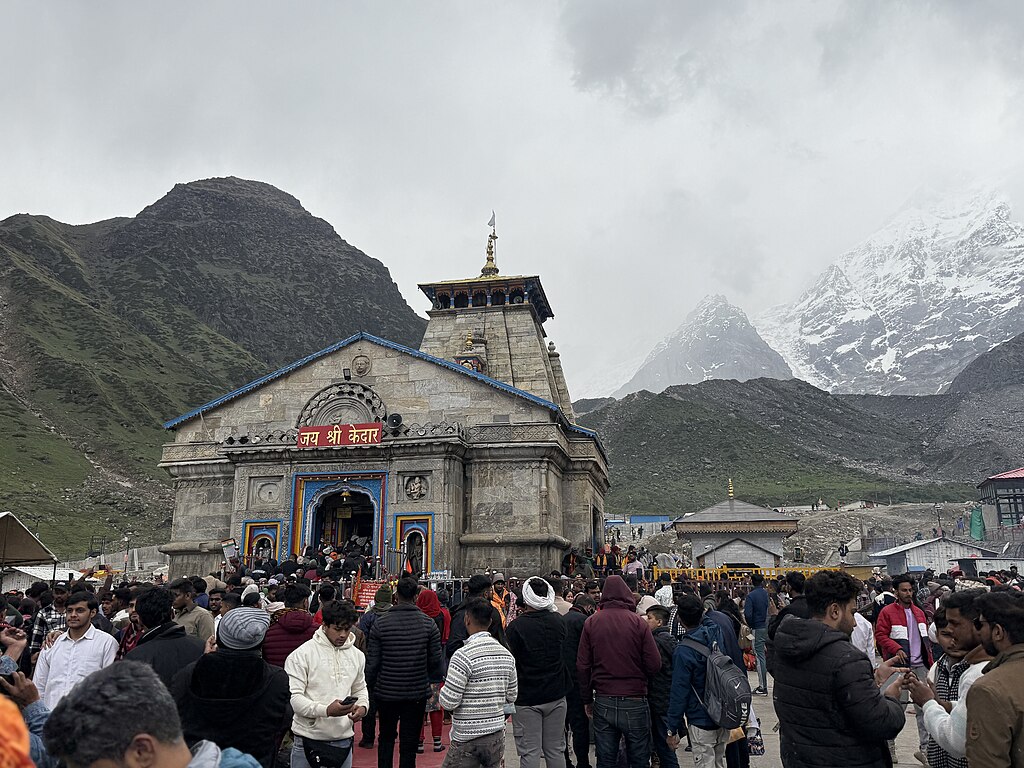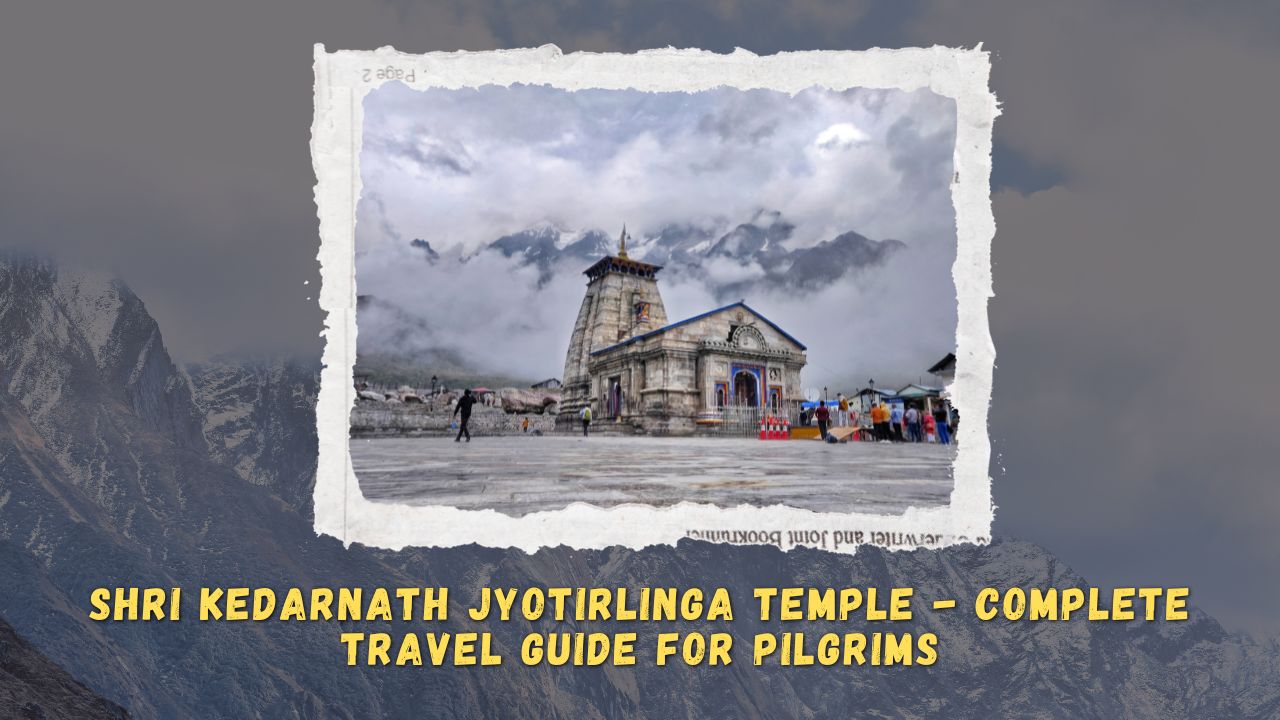Why Every Devotee Dreams of Visiting Shri Kedarnath Jyotirlinga Temple
Imagine standing in the shadow of the majestic Himalayas, the air filled with the sound of temple bells and chants of “Har Har Mahadev.” This is the divine experience awaiting pilgrims at the Shri Kedarnath Jyotirlinga Temple, one of the holiest shrines of Lord Shiva.
Located in Uttarakhand at an altitude of 3,583 meters, Kedarnath is among the 12 Jyotirlingas and a key stop on the Char Dham Yatra. Every year, thousands of devotees brave high-altitude terrain and unpredictable weather to seek blessings here.
This guide gives you everything you need to know: history, darshan timings, opening & closing dates, how to reach, trekking tips, nearby attractions, and travel packages.
History of Shri Kedarnath Jyotirlinga

The temple’s origins trace back to the epic Mahabharata. After the Kurukshetra war, the Pandavas sought Lord Shiva to absolve their sins. To avoid them, Shiva disguised himself as a bull. When Bhima caught hold of him, Shiva vanished into the ground, leaving behind his hump, worshipped today as the Jyotirlinga of Kedarnath.
The temple itself is believed to have been originally constructed by the Pandavas and later revived by Adi Shankaracharya in the 8th century. Despite floods, earthquakes, and heavy snowfall over centuries, Kedarnath continues to stand as a beacon of faith.
Location & Architecture of Kedarnath Temple
Nestled on the banks of the Mandakini River, surrounded by snow-clad peaks, Kedarnath is both a spiritual and scenic marvel.
The temple is built of massive stone slabs, arranged in such a way that they have withstood harsh Himalayan weather for centuries. Inside, the sanctum houses a naturally shaped lingam, representing Lord Shiva’s hump, while the outer walls are adorned with carvings of deities.
Opening & Closing Dates of Kedarnath Temple
The Kedarnath Temple remains open for only six months each year due to extreme weather.
- Opening Date: Usually on Akshaya Tritiya (late April or early May).
- Closing Date: On Kartik Purnima (October–November), after which the deity is moved to Ukhimath for winter worship.
Exact dates vary each year and are announced by the Uttarakhand Char Dham Devasthanam Board. Pilgrims must check the official announcement before planning.
Darshan Timings & Rituals
- Morning Darshan: 4:00 AM – 3:00 PM
- Evening Darshan: 5:00 PM – 9:00 PM
- Special Pujas: Rudrabhishek, Laghu Rudrabhishek, and the evening Aarti are especially popular.
Online registration for Kedarnath Yatra is mandatory.

Best Time to Visit Shri Kedarnath Jyotirlinga
Choosing the right time ensures both safety and a fulfilling experience.
- Summer (May–June): Pleasant weather, best for trekking and darshan.
- Monsoon (July–August): Heavy rainfall and landslides make it risky, avoid this season.
- Autumn (September–October): Clear skies and comfortable weather; a favorite among devotees.
- Winter (November–April): Temple closed; deity worshipped at Ukhimath.
The ideal time is May–June and September–October.
How to Reach Shri Kedarnath Jyotirlinga Temple
Reaching Kedarnath requires determination, as it involves multiple modes of transport.
- By Air: Nearest airport is Jolly Grant, Dehradun (239 km). Helicopter services operate from Phata, Guptkashi, and Sitapur.
- By Train: Nearest railway stations are Rishikesh (221 km) and Haridwar (241 km).
- By Road: Buses and taxis from Haridwar, Rishikesh, and Dehradun reach Gaurikund, the last motorable point.
- By Trek: From Gaurikund, it’s a 16–18 km trek to Kedarnath. Options include ponies, palkis, and mules for those unable to walk.
Kedarnath Trekking & Travel Tips
The Kedarnath trek is both physically demanding and spiritually uplifting.
- Start early in the morning to avoid sudden weather changes.
- Wear warm, layered clothing and carry rain gear.
- Carry high-energy snacks and water.
- Acclimatize if coming from lower altitudes.
- Senior citizens and children can opt for helicopter or pony services.
- Keep medicines for altitude sickness handy.

Places to Visit Near Kedarnath
Enhance your pilgrimage by exploring nearby sacred sites:
- Bhairavnath Temple: Protector deity of Kedarnath, 500 meters away.
- Gaurikund: Base camp with a hot water spring and temple dedicated to Goddess Parvati.
- Vasuki Tal: A serene glacial lake, 8 km trek from Kedarnath.
- Chorabari Tal (Gandhi Sarovar): Picturesque lake where Mahatma Gandhi’s ashes were immersed.
- Guptkashi & Rudraprayag: Holy towns en route with ancient temples and scenic views.
Accommodation Options in Kedarnath
- GMVN Guesthouses & Dharamshalas: Budget stays close to the temple.
- Seasonal Tented Camps: For trekkers seeking adventure.
- Hotels in Guptkashi & Gaurikund: Comfortable accommodations with better amenities.
Book your stay in advance, especially during peak Yatra season.

Kedarnath Yatra Packages with Ghum India Ghum
Planning Kedarnath on your own can be stressful. That’s why Ghum India Ghum offers dedicated Kedarnath Yatra Packages, including:
- Budget Packages: Transport + Dharamshala stay.
- Luxury Packages: Private cabs + hotel stays.
- Helicopter Packages: Overnight stays.
- Kedarnath–Badrinath Combo Tours: Covering two sacred Char Dham shrines.
- Uttarakhand Chardham Yatra: Covers – Gangotri, Yamunotri, Kedarnath, and Badrinath
Book your Kedarnath Yatra with Ghum India Ghum for a safe, spiritual, and hassle-free journey.
Safety & Health Precautions
- Yatra registration is compulsory – carry valid ID.
- Respect the environment; avoid plastics.
- Consult a doctor if you have heart or respiratory issues.
- Carry warm clothing regardless of the season.
- Stay updated with government weather advisories.
FAQs About Shri Kedarnath Jyotirlinga
A: It is one of the 12 Jyotirlingas and part of the Char Dham Yatra, with legends linking it to the Pandavas.
A: It opens on Akshaya Tritiya (April/May) and closes on Kartik Purnima (October/November).
A: Around 3–4 days including travel, trek, and darshan.
A: Yes, with options like palkis, ponies, or helicopters.
A: The temple closes, but the deity is worshipped at Ukhimath.
Related Jyotirlinga Blog Posts
As you prepare for Kedarnath, you might also find these insightful travel guides on other Jyotirlinga destinations helpful:
- Omkareshwar Jyotirlinga Travel Guide – History, darshan timings & how to reach.
- Mallikarjuna Jyotirlinga Travel Guide – Must-know details for pilgrims.
- Shri Mahakaleshwar Jyotirlinga Travel Guide – Everything you need to know.
- Somnath Jyotirlinga Travel Guide – Key information for visitors.
Explore these guides for a broader spiritual journey across India’s sacred Jyotirlingas.
Conclusion
A journey to Shri Kedarnath Jyotirlinga Temple is more than a pilgrimage, it’s an experience of faith, resilience, and spiritual awakening. Whether you trek, ride, or fly, the sight of Lord Kedarnath amidst the Himalayas leaves a memory for a lifetime.
Begin your sacred journey with Ghum India Ghum and experience the Kedarnath Yatra like never before.

